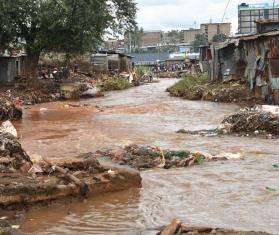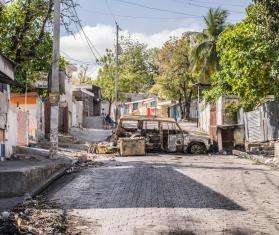New York/Brussels, May 5, 1999 — A team from the international medical organization Doctors Without Borders/Médecins Sans Frontières (MSF) has been investigating reports of a deadly hemorrhagic fever in north-eastern Congo. Since Sunday, a team of four experts has been in the affected town of Durba, which is located in the Watsa region of Democratic Republic of Congo.
Although dozens of people have died in this area from this unidentified illness, it is too early to say what this disease might be. Today the team sent blood samples from four of the victims to a laboratory where they will be analyzed and it is hoped that the pathogen causing the deaths will be identified in the next few days.
The first symptom of the disease appears to be a bad cough. Then other symptoms appear - pain in the muscles and joints, high fever, diarrhea, and intestinal hemorrhaging. The patient goes into shock and generally dies after 5 to 6 days. The disease is clearly a form of hemorrhagic fever.
According to the medical personnel on the ground, the first deaths occurred in mid-January. Most of the victims are men between 30 and 50 years old, who were working illegally in the gold mines in Kalimoto, which closed six months ago. Work conditions in the mines were very hard - the gold miners sometimes worked at the bottom of the pit for 48 hours at a stretch in appalling sanitary conditions. They live in Durba and do not have much contact with the local population. Most of them are single men.
There are some similarities with the outbreak of Ebola virus in Kikwit in 1995, but also differences. It appears, for example, that there is limited transmission of the disease through direct contact. In the coming days the MSF team will gather more information in the towns of Watsa and Durba and in the hospitals. In one of the health centers in Durba, an isolation unit has been set up to treat the patients. The local medical personnel received the necessary information about the symptoms of the disease and about ways to protect themselves. The population has also been alerted in order to ensure that all suspected cases of the disease are treated in the isolation unit and that all deaths are recorded.
The MSF team in Durba consists of 4 persons: the Head of Mission, an epidemiologist, a sanitation specialist, and a doctor who was involved with Ebola during the Kikwit outbreak and also in Gabon.
MSF is the world's largest independent international medical relief agency aiding victims of armed conflict, epidemics, and natural and man-made disasters, and others who lack health care due to geographic remoteness or ethnic marginalization. Each year the organization sends more than 2,000 doctors, nurses, other medical professionals, and logisticians to provide medical aid in more than 83 countries.



